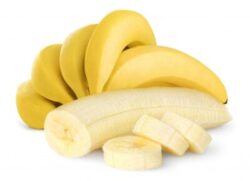10 Best Gluten-Free Substitute For Wheat Berries
Are you look for best Gluten-free Substitute for wheat Berries? Well you are welcome because you are at the right spot As we will be revealing to you those gluten-free substitute you way deserve.
Wheat berries are a nutritious and versatile whole grain that adds a pleasant nutty flavor and chewy texture to a variety of dishes. However, for individuals following a gluten-free diet due to celiac disease or gluten sensitivity, finding suitable alternatives to wheat berries is essential. Fortunately, there is a wide range of gluten-free substitutes that can provide similar taste, texture, and nutritional benefits.
What are wheat berries?
Wheat berries are the whole, unprocessed kernels of wheat, including the bran, germ, and endosperm. They have a firm texture and a nutty flavor.
AlSo Read: How to Store Cooked wheat berries
10 Best Gluten-Free Substitute For Wheat Berries
In this article, we will explore the 10 best gluten-free substitutes for wheat berries that you can incorporate into your culinary repertoire.
1. Brown Rice
Brown rice is a popular and easily accessible gluten-free substitute for wheat berries. It offers a slightly nutty flavor and a firm, chewy texture when cooked. Brown rice is a great option for pilafs, salads, and grain bowls.
2. Quinoa
Quinoa is a complete protein and an excellent source of fiber, making it a highly nutritious alternative to wheat berries. With its mild, nutty taste and delicate texture, quinoa works well in salads, stir-fries, and as a base for grain-based dishes.
3. Buckwheat
Despite its name, buckwheat is not related to wheat and is naturally gluten-free. It has a distinct earthy flavor and a slightly softer texture compared to wheat berries. Buckwheat is ideal for porridges, soups, and as a flour substitute in baking recipes.
4. Amaranth
Amaranth is a tiny, ancient grain that is packed with protein, fiber, and essential nutrients. When cooked, it has a creamy texture and a slightly sweet, nutty flavor. Amaranth is a great choice for breakfast porridges, soups, and stews.
5. Millet
Millet is a versatile gluten-free grain with a mild flavor that pairs well with both sweet and savory dishes. It has a slightly crunchy texture when cooked and can be used in salads, pilafs, and as a replacement for couscous or bulgur wheat.
6. Sorghum
Sorghum is a drought-tolerant grain that is widely used in gluten-free cooking. It has a mild, slightly sweet taste and a chewy texture. Sorghum flour can be used in baking, while cooked sorghum grains can be enjoyed in salads, pilafs, or as a side dish.
7. Teff
Teff is a tiny grain native to Ethiopia that is naturally gluten-free and highly nutritious. It has a subtle, nutty flavor and a pleasingly chewy texture. Teff flour is commonly used in gluten-free baking, and cooked teff grains work well in porridges, stews, and side dishes.
8. Wild Rice
Wild rice, despite its name, is not actually rice but a seed harvested from aquatic grasses. It has a rich, nutty taste and a slightly chewy texture. Wild rice adds a delightful twist to pilafs, stuffings, and casseroles.
9. Chia Seeds
Chia seeds are an excellent gluten-free alternative to wheat berries. When soaked, they develop a gel-like coating, giving them a unique texture. Chia seeds can be used in puddings, smoothies, and as a topping for yogurt or oatmeal.
10. Hemp Hearts
Hemp hearts, also known as hemp seeds, are a highly nutritious gluten-free option. They have a subtle nutty flavor and a soft texture. Hemp hearts can be sprinkled over salads, added to granola, or incorporated into baked goods.
Also Read: How Long Can You Store Wheat Berries Before it Goes Bad?
Conclusion:
In conclusion, the world of gluten-free substitutes offers a diverse range of options for individuals seeking alternatives to wheat berries. Whether you have celiac disease, gluten sensitivity, or simply want to explore different grains and seeds, these substitutes provide flavorful and nutritious alternatives. From brown rice and quinoa to buckwheat and amaranth, each substitute brings its own unique taste, texture, and nutritional benefits to your dishes.
Following a gluten-free diet doesn’t mean you have to miss out on the delicious and nutritious goodness of wheat berries. These 10 gluten-free substitutes offer a diverse range of flavors, textures
Frequently Asked Questions And Answers
Certainly! Here are some frequently asked questions (FAQs) related to gluten-free substitutes for wheat berries:
Why would someone need gluten-free substitutes for wheat berries?
Individuals who have celiac disease or gluten sensitivity need to avoid gluten, a protein found in wheat, barley, and rye. Using gluten-free substitutes allows them to enjoy similar flavors and textures without the gluten content.
Are all gluten-free substitutes equally nutritious?
While gluten-free substitutes can provide their own nutritional benefits, it’s important to ensure a well-rounded diet. Incorporate a variety of whole grains, legumes, fruits, vegetables, and lean proteins to maintain a balanced nutrient intake.
Can these substitutes be used in the same way as wheat berries?
Yes, many of these gluten-free substitutes can be used in a similar manner as wheat berries. They can be cooked, used in salads, soups, stews, and even in baking, depending on the substitute and the desired recipe.
Where can I find these gluten-free substitutes?
Most grocery stores and health food stores carry gluten-free grains and seeds. They can also be found in online retailers that specialize in gluten-free products.
Also Read: How To Make Breads From Wheat Berries
Are these substitutes suitable for individuals without gluten intolerance?
Absolutely! These gluten-free substitutes are not limited to individuals with gluten intolerance. They can be enjoyed by anyone looking to explore different grains, seeds, and flavors in their meals.
How do I cook these gluten-free substitutes?
Cooking methods can vary depending on the substitute. Follow the package instructions or look for specific recipes online to ensure proper cooking techniques and ratios of water to grain or seed.
Can I substitute these gluten-free options 1:1 in recipes calling for wheat berries?
It’s important to note that different substitutes have varying textures and cooking times. For optimal results, follow recipes specifically designed for the gluten-free substitute you’re using, or experiment with ratios to achieve the desired outcome.
Are there any potential allergens or concerns with these substitutes?
While these substitutes are gluten-free, it’s important to consider individual allergies and sensitivities. Some people may have specific allergies to certain grains or seeds. Always read labels and consult with a healthcare professional if you have any concerns.
Are these substitutes readily available and affordable?
Many gluten-free substitutes, such as brown rice, quinoa, and millet, are widely available and relatively affordable. The cost and availability may vary depending on your location and specific product preferences. Consider exploring bulk bins or online options for cost-effective alternatives.
Remember, when incorporating gluten-free substitutes into your diet, it’s essential to read labels, be mindful of cross-contamination, and choose certified gluten-free products if necessary.


